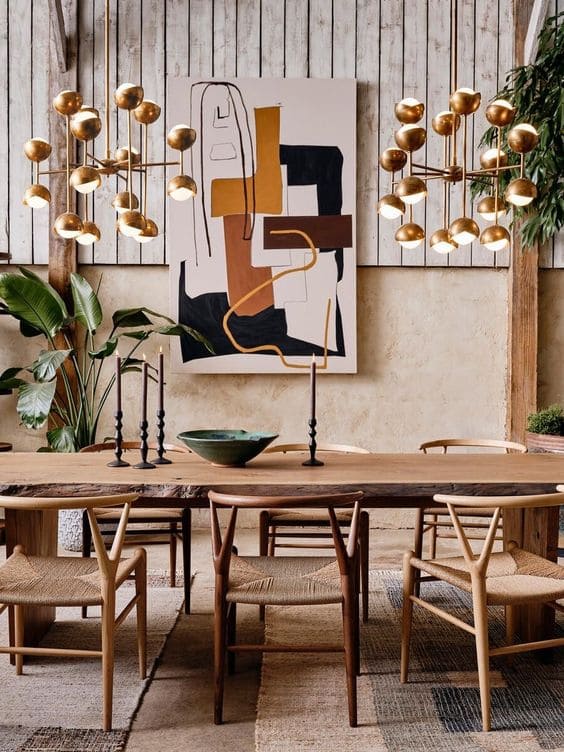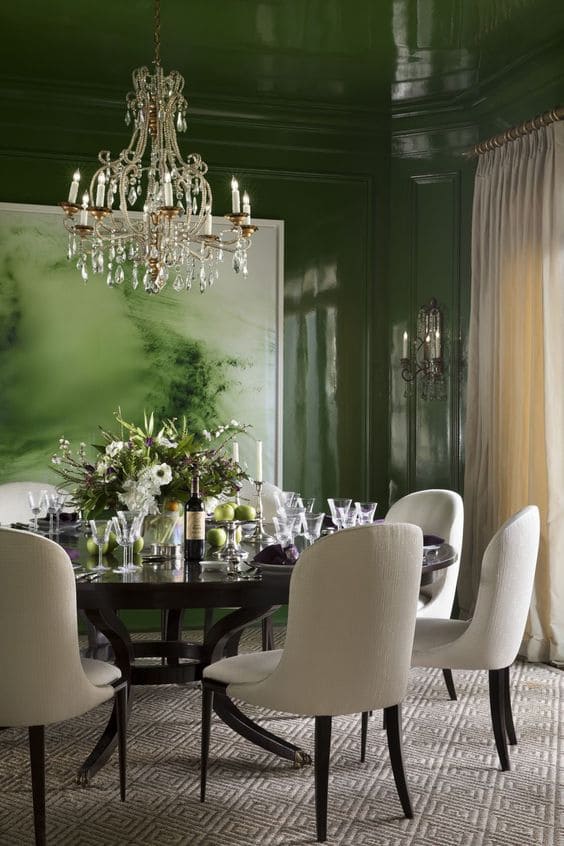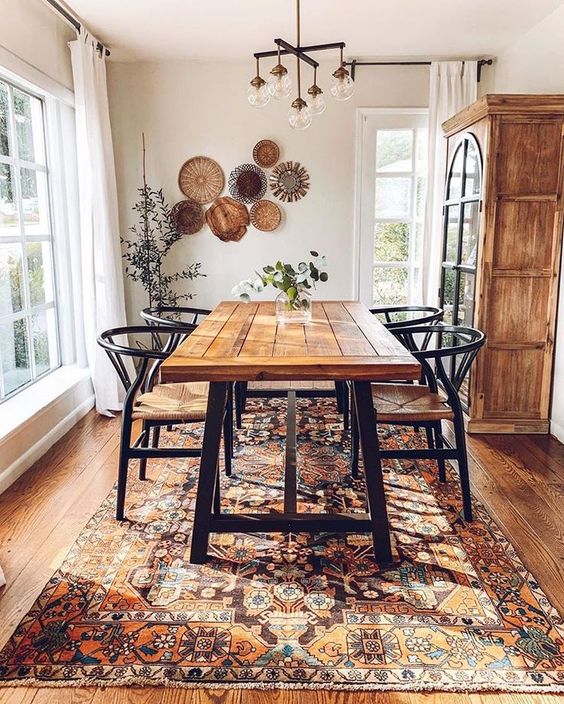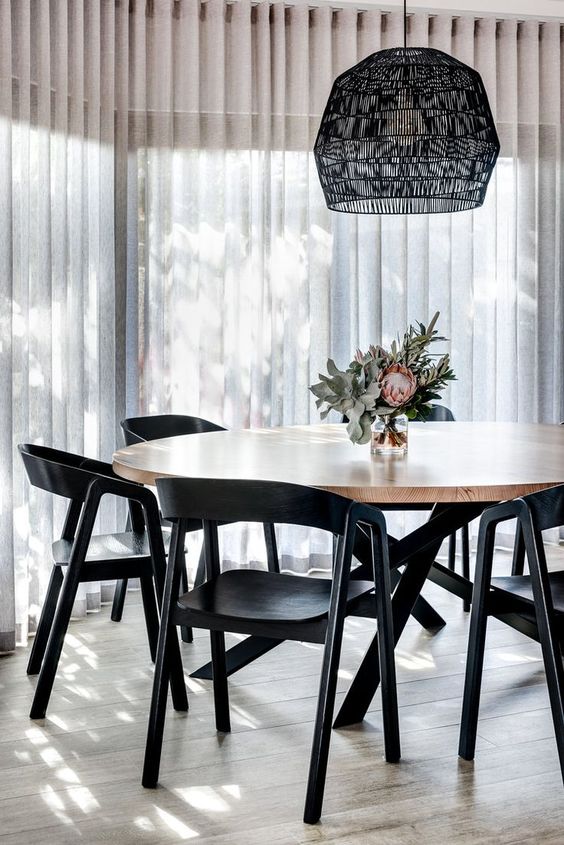Looking to transform your dining room into a stylish and inviting space? Look no further than an accent wall. Adding an accent wall to your dining room is a surefire way to elevate its design, create a focal point, and inject personality into the space.
Whether you prefer a bold and dramatic statement or a subtle and sophisticated touch, there are countless ideas and inspiration to help you take your dining room to the next level. From vibrant wallpapers and eye-catching murals to textured finishes and geometric patterns, the options are endless.
In this article, we will explore the power of a dining room accent wall and provide you with a curated selection of ideas to inspire your own dining room transformation. Get ready to unleash your creativity and make a statement with a dining room accent wall that will leave your guests in awe.
An accent wall is a single wall in a room that is given special treatment to make it stand out from the rest. In the case of a dining room, an accent wall can enhance the overall design and ambiance of the space. It serves as a focal point that draws attention and adds visual interest.
By choosing the right color, pattern, or texture for your dining room accent wall, you can create a sense of depth and dimension, making the room feel larger and more dynamic.
Additionally, an accent wall can help to define different areas within an open-concept dining room, such as the dining area and the living area, creating a sense of separation and organization.
When it comes to accent walls, the possibilities are endless. You can choose to go bold and make a statement with a vibrant color or an eye-catching pattern, or you can opt for a more subtle approach with a textured finish or a simple geometric design. The key is to select an option that complements the overall style and theme of your dining room while adding a touch of uniqueness and personality.
With the right accent wall, you can transform your dining room into a space that not only looks visually stunning but also feels warm, inviting, and memorable.
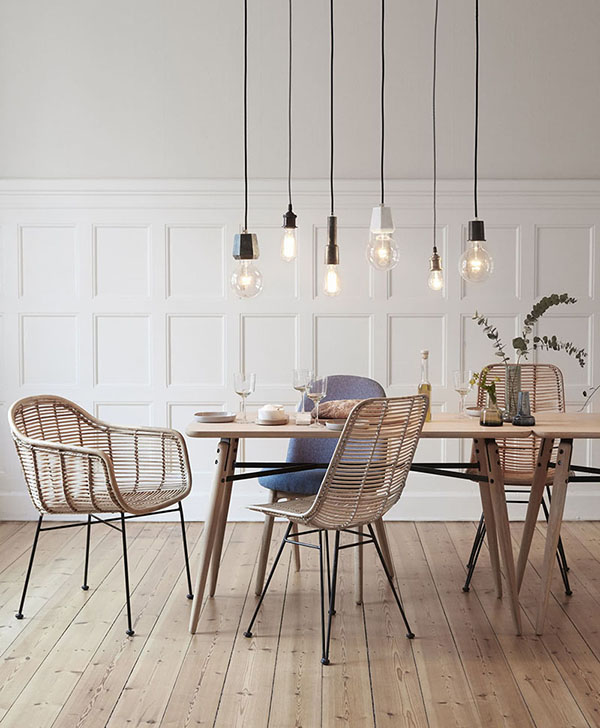
Different Types of Dining Room Accent Wall
There are several different types of accent walls that you can consider for your dining room. The type you choose will depend on your personal style, the overall design of your dining room, and the statement you want to make. Here are a few popular options to consider:
Painted Dining Room Accent Wall
This is perhaps the most common type of accent wall. By choosing a bold or contrasting color for one wall, you can instantly create a focal point in your dining room. Whether you opt for a deep navy blue, a vibrant emerald green, or a rich burgundy, a painted accent wall can add drama and sophistication to your space.
Remember to consider the color palette of your dining room furniture and accessories to ensure a cohesive look.
Wallpaper Dining Room Accent Wall
Wallpaper has made a comeback in recent years, and it’s a great option for creating a statement in your dining room. From bold florals and geometric patterns to subtle textures and metallic finishes, the range of wallpapers available is vast.
Consider using wallpaper on one wall to add visual interest and texture to your dining room. Just be sure to choose a design that complements the style of your dining room and doesn’t overpower the space.
Textured Dining Room Accent Wall
If you’re looking to add depth and texture to your dining room, a textured accent wall can do the trick. Options include brick, stone, wood paneling, or even a textured paint finish. These options can provide a rustic or industrial vibe, depending on the material and style chosen.
A textured accent wall can add warmth and character to your dining room, creating a cozy and inviting atmosphere.
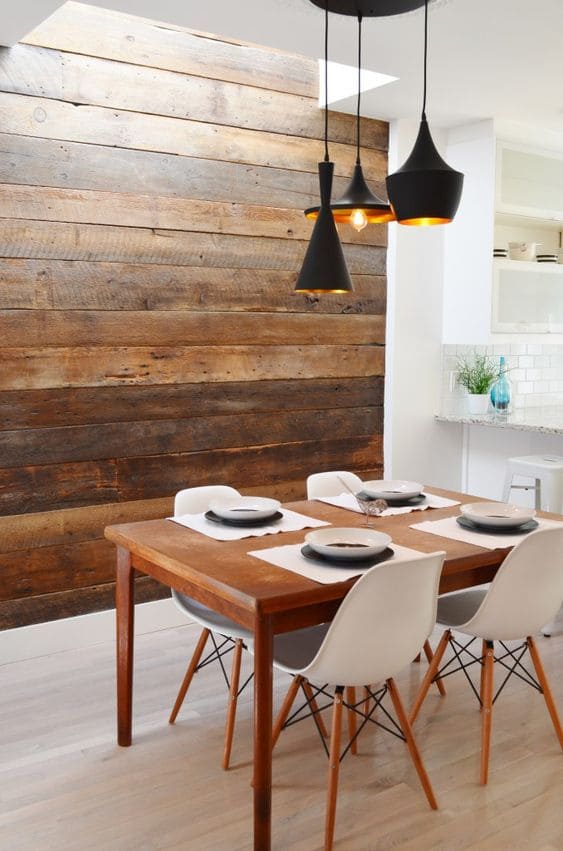
Mural Dining Room Accent Wall
For those who want to make a bold statement, a mural accent wall can be a perfect choice. From abstract designs and cityscapes to nature-inspired scenes and artistic masterpieces, a mural can add a touch of artistry and creativity to your dining room. Consider working with a local artist or exploring online resources to find a mural design that speaks to your personal style and complements the overall theme of your dining room.
No matter which type of dining room accent wall you choose, it’s essential to consider the size and layout of your dining room. In smaller spaces, a bold color or pattern may overpower the room, while in larger spaces, a more dramatic statement might be needed to create impact.
Take the time to experiment with different options and visualize how they will look in your dining room before making a final decision.
Choosing the Right Color for Your Dining Room Accent Wall
The color you choose for your accent wall can have a significant impact on the overall mood and ambiance of your dining room. It’s essential to select a color that not only complements the existing color scheme but also creates the desired atmosphere.
Here are a few tips to help you choose the right color for your dining room accent wall:
Consider the Dining Room’s Lighting
Natural and artificial lighting can significantly affect how a color appears on the wall. Take into account the amount of light your dining room receives throughout the day and how it changes during different times.
Cooler colors like blues and greens work well in rooms with ample natural light, while warmer colors like reds and oranges can add coziness to dimly lit spaces.
Take Inspiration from the Dining Room’s Existing Colors
Look at the colors already present in your dining room, such as furniture, artwork, or curtains. Use these colors as a guide to select a complementary shade for your accent wall.
For example, if you have a lot of earthy tones in the room, consider a warm, neutral color for the dining room accent wall.
Consider the Mood You Want to Create
Different colors evoke different emotions. Blues and greens can create a calming and soothing atmosphere, while yellows and oranges can add energy and vibrancy. Think about the mood you want to set in your dining room and choose a color that aligns with that vision.
Test the Color
Before committing to a color, it’s always a good idea to test it on a small section of the wall. Paint a sample area and observe how it looks in different lighting conditions throughout the day. This will give you a better idea of how the color will appear once it covers the entire accent wall.
Remember, there are no hard and fast rules when it comes to choosing the right color for your dining room accent wall. Trust your instincts and go with a shade that resonates with you and your dining room’s overall design.
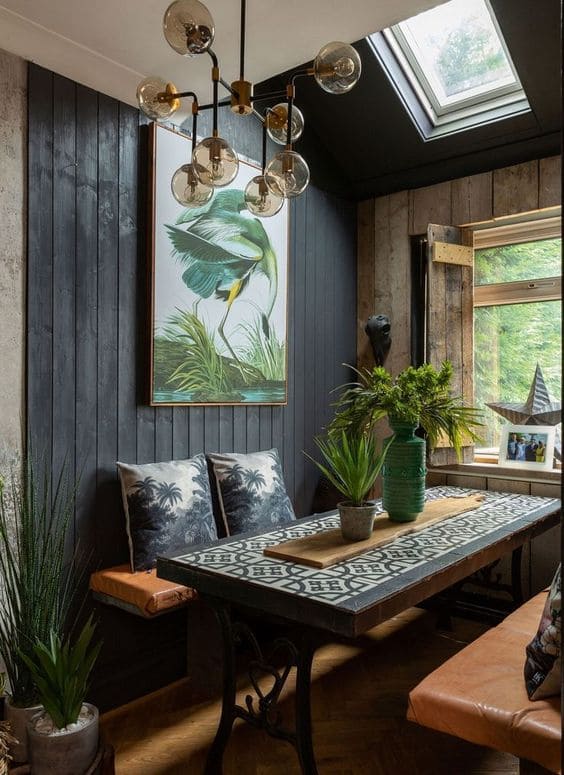
Accent Wall Ideas and Inspiration for Different Dining Room Styles
Now that you understand the power of an accent wall and how to choose the right type and color, it’s time to explore some ideas and inspiration for different dining room styles. Whether you have a traditional, modern, eclectic, or minimalist dining room, there’s a dining room accent wall option that can elevate your space. Here are a few ideas to inspire your own dining room transformation:
Traditional Elegance
For a traditional dining room, consider a wallpaper with a classic damask pattern or a textured paint finish in a soft neutral tone. This will add a touch of sophistication and timeless elegance to the space.
Modern Chic
If your dining room has a modern aesthetic, opt for a bold and graphic wallpaper with geometric shapes or abstract patterns. Black and white combinations or metallic finishes can create a sleek and contemporary look.
Eclectic Charm
In an eclectic dining room, embrace the mix and match aesthetic with a mix of patterns, colors, and textures. Consider a mural with vibrant colors or a wallpaper with an eclectic pattern to add personality and charm.
Minimalist Serenity
A minimalist dining room can benefit from a simple yet impactful accent wall. Choose a solid color in a muted tone to create a calming and serene atmosphere. Alternatively, a textured accent wall with a subtle pattern can add visual interest without overwhelming the space.
Remember, these are just starting points for your own creative process. Don’t be afraid to mix and match ideas or come up with your own unique concept that truly reflects your personal style and taste.
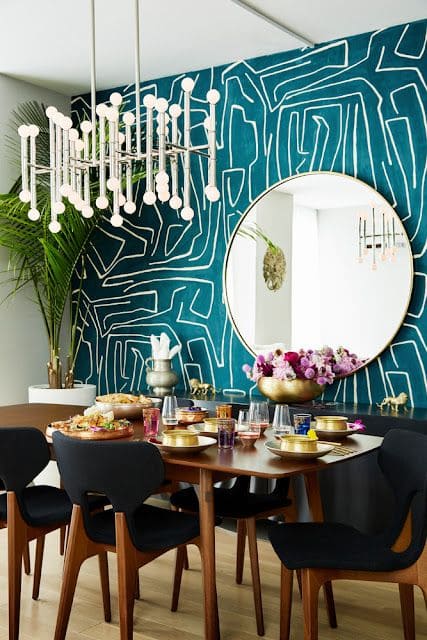
How to Properly Prepare and Paint an Accent Wall
Once you have chosen the type and color for your dining room accent wall, it’s essential to properly prepare the wall surface and ensure a smooth and professional-looking finish. Here are the steps to follow when preparing and painting an accent wall:
Clean and Repair
Start by cleaning the wall surface thoroughly to remove any dirt, dust, or grease. Repair any cracks or holes with spackle or putty and sand them down until smooth. This will ensure a clean and even surface for painting.
Protect Surrounding Areas
Use painter’s tape to protect the edges of the adjacent walls, ceiling, and baseboards from paint splatters or drips. Cover the floor with drop cloths or plastic sheets to protect it from accidental spills.
Prime the Wall
If you are painting over a dark or heavily textured surface, it’s recommended to apply a primer before painting. Priming will help the paint adhere better and provide a more even finish. Choose a primer that is suitable for the type of wall surface you have.
Paint the Dining Room Accent Wall
Start by cutting in the edges of the accent wall using a brush. Then, use a roller to apply the paint evenly to the rest of the wall. Work in small sections, overlapping each stroke to avoid visible lines or streaks.
Depending on the type of paint and color, you may need to apply multiple coats for full coverage. Allow each coat to dry completely before applying the next.
Remove the Tape
Once the final coat of paint is dry to the touch, carefully remove the painter’s tape while pulling it away at a 45-degree angle. This will help create clean and crisp edges.
Touch Up and Finish
Inspect the accent wall for any missed spots or imperfections. Use a small brush to touch up these areas if necessary. Once you are satisfied with the result, allow the paint to cure fully before moving furniture back into place or adding wall decor.
Proper preparation and painting techniques are crucial to achieve a professional-looking dining room accent wall. Take your time, follow these steps, and enjoy the rewarding process of transforming your dining room.
Dining Room Accent Wall Accessories and Decor
When your dining room accent wall is painted and ready, it’s time to enhance its impact with carefully selected accessories and decor. Here are a few ideas to help you complete the look of your dining room:
Statement Lighting
Install a stylish and eye-catching light fixture above the dining table to draw attention to your dining room accent wall. Choose a design that complements the overall style of your dining room and adds an additional layer of interest.
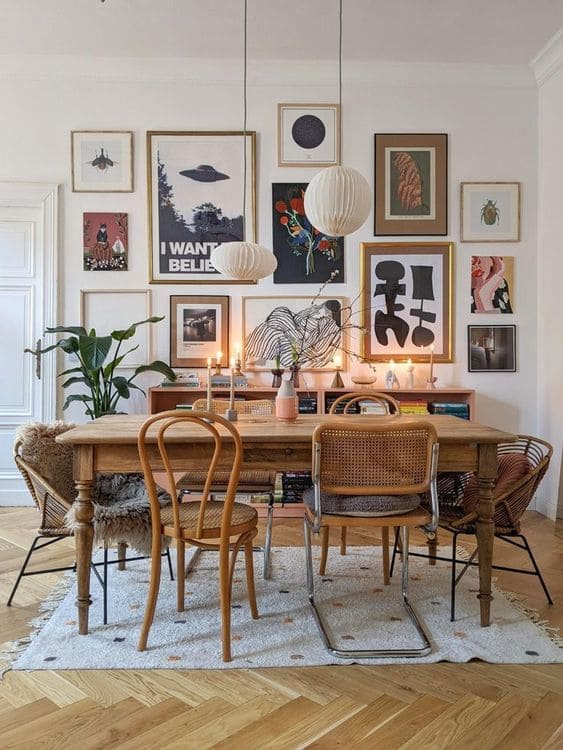
How To Make Your Dining Room Chandeliers Look Like A Million Bucks?
Artwork and Mirrors
Hang artwork or mirrors on the dining room accent wall to add visual interest and create a focal point. Consider grouping multiple pieces of art or using a large statement piece to make a bold statement.
Floating Shelves
Install floating shelves on the dining room accent wall to showcase decorative items such as plants, vases, or collectibles. This will add depth and dimension to the wall while allowing you to personalize the space.
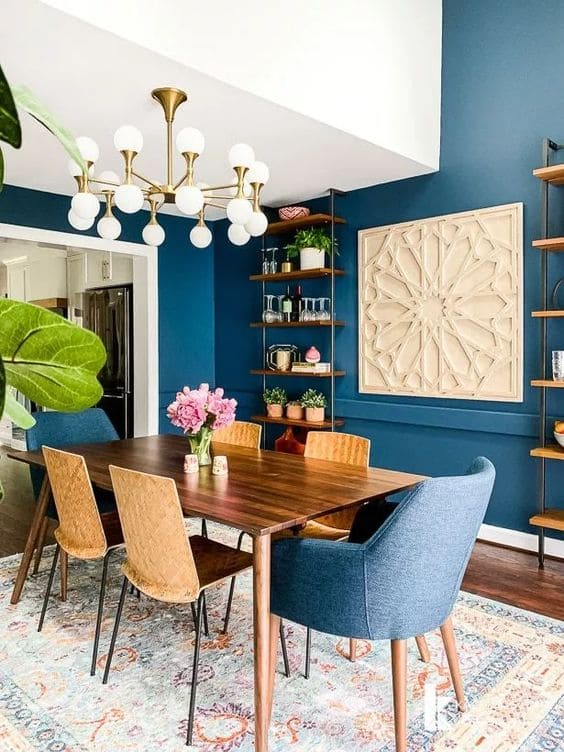
Wall Sconces
Add wall sconces on either side of the dining room accent wall to create a balanced and symmetrical look. Choose sconces that complement the style of your dining room and provide ambient lighting for a cozy and inviting atmosphere.
Textiles and Upholstery
Incorporate textiles and upholstery that complement the colors and patterns of your accent wall. Consider using vibrant or textured fabrics for curtains, chair covers, or table runners to tie the room together.
The key to accessorizing your dining room accent wall is to strike a balance between adding visual interest and not overwhelming the space. Choose items that complement the accent wall without competing for attention.
Tips for Maintaining and Updating Your Dining Room Accent Wall
When your accent wall is complete, it’s important to maintain its beauty and functionality. Here are a few tips for keeping your accent wall looking fresh and vibrant:
Regular Cleaning
Dust or wipe down your accent wall regularly to keep it free from dirt and grime. Use a soft cloth or a duster to avoid scratching or damaging the surface.
Touch-up Paint
Over time, your accent wall may develop scuffs or scratches. Keep some leftover paint in a sealed container for touch-ups when needed. Apply a small amount of paint to a brush and carefully cover the imperfections.
Rotate Wall Decor
Switch up the artwork or decorative items on your accent wall from time to time to keep the space feeling fresh and updated. This will also allow you to experiment with different styles or seasonal decor.
Consider a Refresh
If you feel like your accent wall needs a change, don’t be afraid to update it. Whether it’s changing the color, adding a new wallpaper, or experimenting with a different texture, a refreshed accent wall can breathe new life into your dining room.
Remember, your dining room accent wall should be a reflection of your personal style and taste. Don’t be afraid to make changes and updates as your preferences evolve over time.
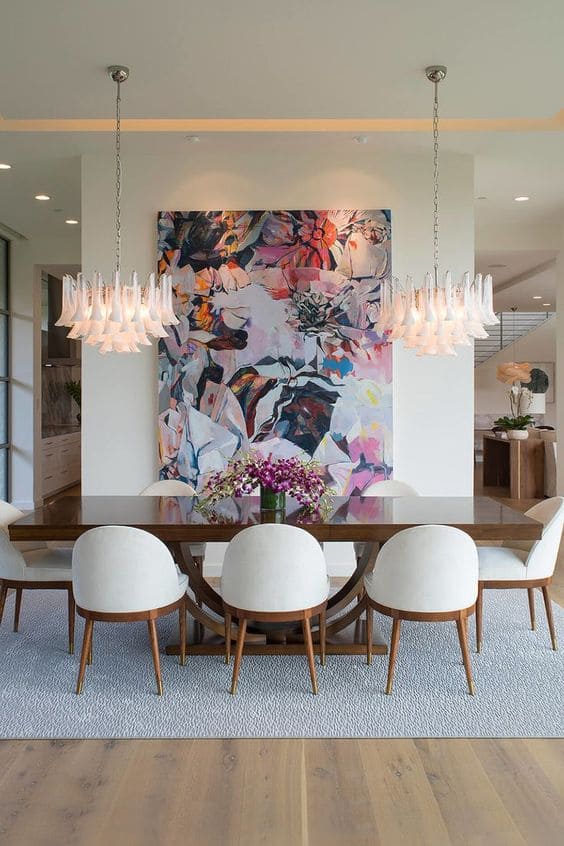
Accent Wall Mistakes to Avoid
While adding an accent wall can truly elevate your dining room, there are a few common mistakes to avoid to ensure the best result:
Choosing the Wrong Wall
Be strategic in choosing the wall for your accent wall. Typically, the wall with the most visual impact or the wall directly opposite the entrance is a good choice. Avoid selecting a wall with windows or doors, as it may disrupt the impact of the accent wall.
Going Overboard
While it’s essential to make a statement with your accent wall, going overboard can overwhelm the space. Ensure that the dining room accent wall complements the overall design of your dining room and doesn’t overshadow other elements.
Clashing with Existing Elements
Consider the existing elements in your dining room, such as furniture, flooring, and decor. Ensure that the color and style of the accent wall work harmoniously with these elements, rather than clashing or competing for attention.
Ignoring Balance
Balance is key when it comes to design. Ensure that the accent wall doesn’t overpower the rest of the room or create an imbalance. Consider other focal points in the space and ensure that they work together harmoniously.
By avoiding these common mistakes, you can create a well-designed dining room accent wall that truly enhances your dining room.
Conclusion: Elevate your dining room with an accent wall
The overall look of any dining room or any space for that matter can be greatly enhanced with an accent wall. Not only does it add dimension and visual interest to the room, but it also can help encapture the desired atmosphere or theme of the area. When choosing the right accent wall type, be sure to factor in what best suits your aesthetic and lifestyle needs.
Additionally, decisions about color, decor, accessories, maintenance, and updates must all be taken into account before committing to a full revamp of your dining room.
Finally, be sure to avoid any common mistakes when planning your own accent wall as listed in this blog post. Now go forth and make your dream dining room a reality!
Don’t forget to like and share this post with friends who are looking for some accent wall inspiration.

